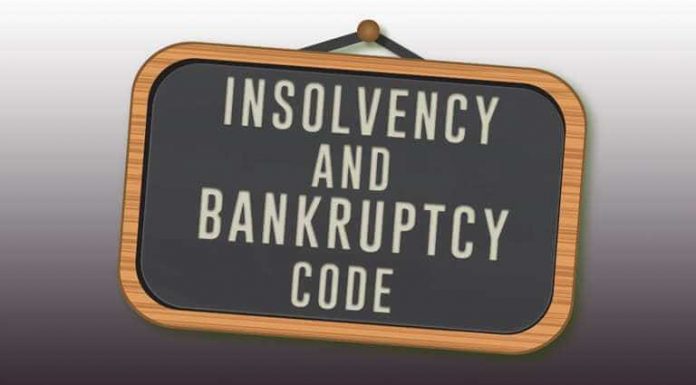This article is written by Akshita Gupta, from Symbiosis Law School, Noida. This article analyses insolvency and bankruptcy in Ghana and India.
Table of Contents
Introduction
In the age of globalization, countries compete with one another to expand their economies. Legislations protecting the interests of the parties are being drafted to encourage this expansion. The nation’s Insolvency and Bankruptcy Code, 2016 is one example of legislation that protects stakeholders’ rights while also encouraging corporate activity. The law not only protects the parties’ trust in a transaction but also helps the defaulter reconstruct its business in the event of insolvency or bankruptcy.
Insolvency laws are essential for safeguarding the economic interests of parties involved in financial or operational transactions since they protect debtors, creditors, and other stakeholders. These rules establish an institutional framework for regulation, an adjudicatory system, and the engagement of insolvency specialists who serve as a moderator, remain objective and fair to all parties involved, and take serious measures in the negotiation process.
Insolvency and bankruptcy: meaning, scope, and need
Meaning of insolvency
Insolvency occurs when a person, corporation, or other organization is unable to satisfy its financial obligations for paying debts as they become due.
Meaning of bankruptcy
Bankruptcy is a legal process that involves a person or company that is unable to pay its debts. The bankruptcy procedure starts with a petition being submitted by the debtor or on behalf of creditors, depending on the particular case. The debtor’s assets are all measured and analyzed, and the assets may be utilized to pay off some of the debt.
India’s perception towards insolvency and bankruptcy
Formation of the Insolvency and Bankruptcy Code, 2016
The Joint Committee was referred to the Insolvency and Bankruptcy Code, 2015 after it was introduced in the Lok Sabha on December 21, 2015. The Committee had given its recommendations and an amended bill based on its proposals in response to such a referral. The Insolvency and Bankruptcy Code, 2016, was passed by both Houses of Parliament in May 2016. The main goal of these economic reforms was to place a greater emphasis on creditor-driven insolvency settlement.
In India, the Insolvency and Bankruptcy Code, 2016, is a mature step toward resolving the legal situation around financial failures and insolvency. The Code has substantial value for all stakeholders, including various government regulators, because it provides an easy departure with a painless method in cases of insolvency of individuals and organizations. With the introduction of this Code, overlapping Sections in the following laws have been eliminated:
- The Sick Industrial Companies (Special Provisions) Act of 1985.
- The Banks and Financial Institutions Debt Recovery Act of 1993
- The Securitization and Reconstruction of Financial Assets and Enforcement of Security Interest Act, 2002
- Companies Act, 2013
Before the introduction of this Code, many agencies were dealing with debt, defaults, and insolvency, resulting in delays, complications, and higher expenses in the insolvency resolution process. One of the insolvency regulators, the ‘Board for Industrial and Financial Reconstruction (BIFR),’ has been a phantom for ailing industrial enterprises. The Insolvency and Bankruptcy Code, 2016, is designed to speed up cases that have been pending for a long time and settle them within 180 days, with a 90-day extension.
The key objectives of the Act are:
- To combine and revise the laws governing corporate reorganization and insolvency resolution, as well as the laws governing partnership firms and people.
- Fixing time intervals for the law’s execution in a time-bound insolvency settlement (i.e. 180 days).
- To increase the value of the assets of those who are interested.
- To encourage people to start businesses.
- To boost credit availability.
- To strike a balance between the interests of all stakeholders (including alteration) to prioritize payment of government dues, the balance must be completed.
- To create an Insolvency and Bankruptcy Board of India to serve as a regulatory authority for insolvency and bankruptcy law in India.
Merits of IBC, 2016
Resolving the insolvency proceedings on time
The resolution process is time-bound, and the business is transferred to the resolution applicant as an ongoing concern, ensuring no economic loss due to production halts or under-utilization of resources, as well as minimal loss of employment, government revenues, local ecosystem, and ancillary industries.
Certainty and an unblemished title
There is clarity in the settlement of liabilities and ownership of assets when insolvency is addressed under the Code. The resolution applicant now has a clean and litigation-free business and assets, among other things, because all liabilities, including government dues, have been settled.
Prevents debtors from engaging in fraudulent behaviour
The debtor is prohibited from engaging in any action to cheat the creditors since ownership and control of the business entity, its assets, and business activities are transferred from the debtor to an insolvency professional as soon as an application is accepted by the adjudicating authority.
Compare this to the previous position, in which the debtor retained control over business activities and assets, allowing him to stall his feet, prolong the process by litigating indefinitely, and fraudulently dispose of assets to cheat creditors, employees, the government, and others.
Debtors who are in good standing are eligible for relief
Before the IBC, debtors were haunted for the rest of their lives by unpaid liabilities that remained unpaid following proceedings. Resolution through the Code, on the other hand, ensures the complete payment of all liabilities, freeing bona fide debtors from debt traps and government obligations.
Shortcomings of the IBC, 2016 in India
Failure to complete the process within the specified time frame
The Code’s raison d’être is a timely resolution of proceedings and delivery of a settlement. It is, nevertheless, a challenging task due to the lack of a supporting ecology. There are too many resistive forces to enumerate here, yet they cause significant delays in a time-bound execution.
There is a lack of coordination among the parties involved
A lack of coordination between the parties involved in the process (creditors, stakeholders) is frequently seen, causing bankruptcy proceedings to be delayed and stymied.
Insolvency specialists with little or no experience
Because the Code and its mandated procedures are new, insolvency practitioners, advocates, and adjudicators lack experience, causing severe delays in the resolution process. Due to this lack of experience, a company that may have been saved is sometimes forced to liquidate.
Courts are overburdened
Because the number of NCLTs and NCLATs is limited, they are burdened with a flood of applications, which naturally delays the completion of procedures. As a result, it is time to double the number of NCLT and NCLAT benches.
An increase in the threshold is unfavourable to operational creditors.
The Act’s application threshold was abruptly raised from Rs. 1 lakh to Rs. 1 crore during the Covid-19 period. Without a doubt, the Rs. 1 lakh threshold was too low, but the arbitrary hiked to Rs. 1 crore was excessive. It has left a huge number of operational creditors stranded. Instead, a gradual or progressive increase in threshold is recommended, as this may be damaging to the Code’s fundamental objective.
Insolvency and Bankruptcy in Ghana
The new Corporate Restructuring and Insolvency Act, 2020 (Act 1015) creates a “rescue culture” by allowing enterprises to restructure and go into administration, which was previously only available to specialized institutions like banks and insurance companies. In other words, all companies registered in Ghana now have the choice to reorganize, go into receivership, or seek administration. The purpose of Act 1015 is:
- To establish a legal framework for the administration and temporary management of a distressed company’s business, property, and affairs in such a way that the company can continue to operate as a going concern to the greatest extent possible,
- The imposition of a temporary freeze on creditors’ and other claimants’ rights against a distressed company,
- The development and implementation of a restructuring plan that provides a better return for creditors and shareholders than an immediate winding up of a distressed company,
- The official liquidation of a corporation,
- Cross-border insolvency,
- The regulation of insolvency services and netting agreements.
The Act is divided into five sections- Administration, Official Liquidation, Insolvency Services, Cross Border Insolvency, and Agreements and Other Miscellaneous Matters are the categories. To appreciate the benefits of this legislation, it’s important to recall that for many companies, official liquidation was the only option on the books for decades.
Highlights of the new law
- Consensual liability restructuring including active engagement of creditors in administration (watershed meeting), receivership, or liquidation to protect their investment while also allowing enterprises to freely re-strategize and prepare their recovery from the consequences of COVID-19, for example.
- The law’s option of restructuring agreements frees the company from debt without impacting the responsibility of a guarantor of a loan.
- The statute provides for the protection of company property, virtually prohibiting creditors from enforcing charge orders once the administration process begins.
- Insolvency proceedings that cross national borders. Foreign insolvency proceedings, as well as cooperation with foreign insolvency courts and court recognition of foreign representatives to participate in bankruptcy proceedings in Ghana involving a foreign debtor, are all recognized under the legislation.
- The creation of an Insolvency Services Division inside the office of the registrar of companies, responsible for monitoring practitioners, evaluating the law and advising the minister on insolvency issues.
- Some businesses will be unable to pay off or settle creditors while continuing to trade. A Liquidation Fund is established into which money received by the liquidator is to be paid, and from which money may be disbursed by the liquidator for the beneficial administration or winding up of a company after the liquidation begins.
- The newly approved law repeals the Bodies Corporate (Official Liquidations) Act, 1963, which governs winding up and liquidation proceedings (Act 180). The Companies Act, 2019 (Act 992), in conjunction with the Corporate Restructuring and Insolvency Act 2020 (Act 1015), will usher in a new era in Ghanaian business, in which creditors, employees, and shareholders’ interests are adequately protected, and private enterprises are assured of a smooth transition.
Comparative analysis of IBC in Ghana and India
In India, in 2016, the IBC was introduced by the Centre to resolve claims concerning insolvent companies. The bankruptcy code is the best solution for resolving insolvencies, which was formerly a time-consuming process with no economically acceptable remedy.
During the Covid time, IBC law had been suspended for a year because of the growing concern sales may not be practicable or desirable during the pandemic. It was possible that buyers were not available on the market. Alternatively, due to industry-wide causes, there could be an oversupply of identical assets in the market, driving down the price of such assets.
After the suspension was over, India has brought a pre-pack scheme during the Covid time as a remedial action to combine different corporate restructuring methods such as the sale of the debtor’s assets to another company, refinancing and interim financing, change in management, and so on before the debtor enters bankruptcy proceedings under the IBC. A pre-pack is the resolution of a distressed company’s debt through an agreement between secured creditors and investors. The Central Government’s pre-pack provisions also included necessary safeguards to guarantee that the measures were not abused by malicious promoters.
In Ghana, the Companies Act, 2019 (Act 992), in conjunction with the Corporate Restructuring and Insolvency Act 2020 (Act 1015), will usher in a new era in Ghanaian business, in which creditors, employees, and shareholders’ interests are adequately protected, and private enterprises are assured of a smooth transition. This Act has been established as the country considers methods and alternatives for restoring and recovering from the economic collapse caused by the COVID-19 pandemic. Enterprises will have a new tool in their armory as they rebuild their businesses in the wake of the ongoing pandemic’s damage. The passage of the Corporate Restructuring and Insolvency Act, 2020 (Act 1015) is a step in the right direction in terms of enhancing the legal framework for corporate organizations and their administration in the event of insolvency and saving small and medium businesses.
Conclusion
In India, the provisions of the personal insolvency legislation for declaring the insolvency of people and partnerships are contained in the IBC, although they have not yet been published in the official gazette by the Central Government. However, such a change is necessary for the institutional infrastructure to evolve.
In Ghana, although Act 1015 was not drafted to assist in the recovery and revitalization of individual businesses but the economy as a whole once the Covid-19 pandemic has passed, it will undoubtedly assist in the rescue and revitalization of individual businesses. The Act is useful in alleviating the stressful scenario in which most enterprises will find themselves. When the Covid-19 outbreak is ended, the new Act will provide businesses with a solid base on which to rebuild.
References
- https://cleartax.in/s/insolvency-and-bankruptcy-code-2016
- https://thedailyguardian.com/merits-of-the-insolvency-and-bankruptcy-code-2016/
- https://integratedlegalconsultants.com/wp-content/uploads/2020/07/Revised-ILC-Newsletter-Edition-9-June-2020.pdf
- https://bpaghana.com/2020/08/28/in-the-nick-of-time-the-insolvency-law-and-post-covid-recovery-in-ghana-2/
LawSikho has created a telegram group for exchanging legal knowledge, referrals, and various opportunities. You can click on this link and join:
 Serato DJ Crack 2025Serato DJ PRO Crack
Serato DJ Crack 2025Serato DJ PRO Crack











 Allow notifications
Allow notifications



